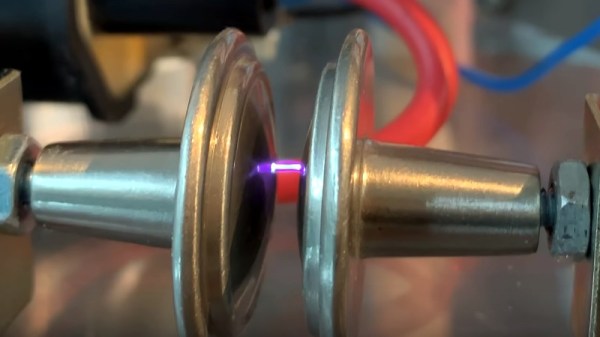When we think of a spark gap radio transmitter, most of us immediately imagine an early twentieth century ship’s radio room or similar. Most of us know these transmitters as the first radio systems, and from there we’ll probably also know that they were phased out when better circuits arrived, because of their wide bandwidth. So it’s rare in 2024 to find anyone characterizing a spark gap transmitter, as [Baltic Lab] has.
The circuit is simple enough, a high voltage passes through an RC network to a spark gap, the other side of which is a tuned circuit. The RC network and the spark gap form a simple low frequency relaxation oscillator, with the C being charged until the spark gap triggers, forcing the subsequent discharge of the capacitor and causing the spark to extinguish and the cycle to repeat. The resulting chain of high voltage pulses repeatedly energizes the tuned circuit, with each pulse causing a damped oscillation at its resonant frequency. The resulting RF signal is a crude AM tone which can be received fairly simply.
The mathematics behind it all is pretty interesting, revealing both the cause of the bandwidth spread in the low Q factor of the tuned circuit, and the presence of a large spurious frequency spike on an interaction with the capacitor in the RC circuit. It’s all in the video below the break, and we have to admit, it taught us something about radio we didn’t know.
Meanwhile spark gaps weren’t the only early radio transmitter technology. How about an alternator?













